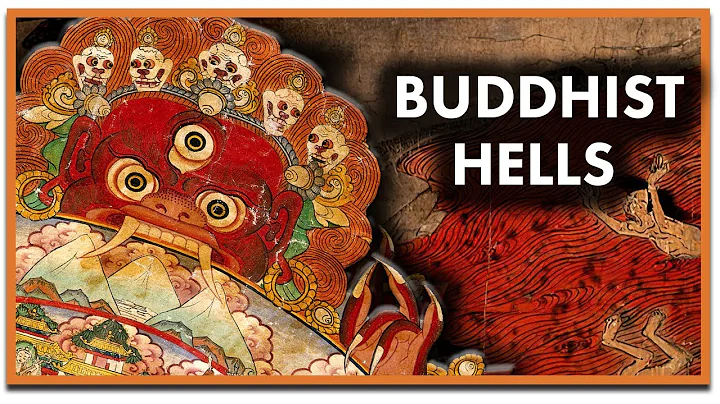Hinduism is a religion from mainland India, without a single founder, a highly ritualized form of worship. Various denominations call it monist , dualistic , pantheistic , atheistic, polytheistic or any combination thereof.
Shiva , Shakti, Vishnu , Ganesha and Brahma represent the highest order of Hinduism. The classic books and poems that define Hinduism were written in Sanskrit and originated in ancient times. They range from philosophical papers and legal books on the life and love of the gods to metaphysical questions.
Hinduism is the root of Jain , Sikh and Buddhism. Hinduism is the main religion of India, Nepal and Mauritius . It is also an important minority of religions in Fiji , Suriname , Bhutan , Sri Lanka, Bangladesh , Guyana, Trinidad , Malaysia and Singapore .
Nataraj, the dance form of Lord Shiva
Ancient religion
Hinduism is the oldest of all religions believed in the world today. It is generally believed to have originated from around 2000 B.C.-1500 B.C.; although archaeological evidence in the form of religious artifacts (the seal known as the original Shiva was found at the site of Mohenjo-daro in 2700 B.C.) may point to an earlier era.
Hinduism has a large number of religious texts, and none of them is considered to be the only representative of Hinduism. The earliest works were collected under the general name " Vedas ", which roughly means knowledge.
Four Veda are: "Rigveda ", "Samaveda", "Jeruveda" and "Aharva Veda".
They are sacred texts of hymns, mantras and rituals from ancient India.
Valmiki's "Ramayana" and Ved Vyasa's " Mahabharata " are also considered Hindu sacred texts.
Part of the Mahabharata, the Holy Book Bhagavad Gita, is one of the most respected classics in modern India. It contains Lord Krishna's sermon on the battlefield of Kurukshetra to ajuna . It describes how to enhance the divinity of an ordinary person and enjoy absolute happiness.
Hinduism may be considered more of a way of life than a religion. The practice of rituals in Hinduism is used to declare itself as Hinduism. Theological study, although important, is still secondary to rituals. It is a fusion of different theories, beliefs and philosophy.
has two popular beliefs, Dvaita and Advaita; they are the dual principle and the non-dual principle.
Duality principle points out that God and mortals are two different beings. The principle of non-duality claims that all forms of life are interconnected with supreme beings, and that the supermathematical and inner self (soul) of all living things are one.
But the word Hindu was not mentioned in ancient texts, the only term they used was "dharma" or human guidelines in that particular role. One might think it is the most open and democratic form of the system, and ideology can be in and out or modified at any time.
The text that forms the foundation of Hinduism was written by people from many different periods, and no one could define this religion alone. Due to this flexibility and mobility, this religion can withstand the test of the times.
Religious Philosophy
According to Indian Philosophy , approaching God or obtaining liberation is a personal act. Semitic religion emphasizes the need for people to follow a specific prophet, obey God's will and accept authority; such as " Bible " or " Quran ".
Hindu teachings say that there is no special way or book to reach God or heaven. The meaning of “Sarvadeva Namaskara Kesavamprathi Gattchathi” in Indian philosophy is: You can choose any way or form to worship, because all ways are the true way to God.
The guru of Hinduism is a person who guides others in religious affairs and worship, Hindus believes that the guru is a guide to the road to God.
Veda immortals, ancient saints who conducted religious rituals and services for social welfare, are considered to be the earliest recipients of the Vedas. Hindu texts derived from revelation are called apocalypse. Vedas are considered to be the absolute truth discovered by Vedic immortals and passed from masters to disciples and passed on to every generation.
Hindus believe that apocalypse establishes that creation is purposeful and that there are some other reality beyond the visible material world. Hindus sees the self as an illusion that by reading the Bible or receiving guidance, a person will realize that their birth “state of being” has a purpose.
His believe that a person's "state of existence" is the result of good or evil deeds in early years. When a person dies, only the body will perish. The soul ( Atman ) will rebirth in the world through a cycle that may be manifested in any form of life matter.
Later people began to use Tada Patra (in Sanskrit , Tada is the name of a tree, Patra means leaves, so it is the leaf of a tree Tada, which is quite large in size and is suitable for writing and recording text; some manuscripts written in Tada The leaves of the tree can still be found in Indian museums) These contents are recorded in literary form.
on modernity
Monu Code is the oldest legal source still in use in India. Many ancient Hindu religious texts are still used as reference points for the social and judicial life of contemporary Indians.
Article 5 and other related parts of the Modern Hindu Marriage Law are about the solemnization of Hindu marriage and a modern interpretation of the ancient Vedic Hindu Dharma.
Other major religions in India have a common past with Hinduism, and Sikhism reveres some Hindu scriptures.
The bride and groom sacrifice at Hindu wedding
Hinduism has a lot in common with the ancient religions of Greek and Roman . As long as you attend the ceremony, it proves the devotion and worship of God, and its followers will not give up on orthodox dogma.
For Hindus, the Vedas describe the concept of ideal behavior and the correct way of life. The Holy Book of the Hindus - Srimad Bhagwad Gita - Promotes a Way of Life. The way you must follow to get liberation is to free yourself from worldly constraints and free yourself from reincarnation.
Indian Yoga
In the 6th century BC, yoga exercises were developed in India. New Hinduism is based on Ramakrishna and represents the unity of all religions. It's a way of tolerance and love. If practiced correctly, all religions can be the way to God.
Patanjali is the father of Indian yoga who lived in the second century BC. In " Yoga Sutra ", he mastered the essence of all yoga knowledge in just a few words. Patanjali's two main collections are, "Yoga is the peace of mind, and the yogi lives in the light."
Patanjali's path to peace is to make the mind calmer and calmer on the path of practice, and finally be able to live peacefully. Patanjali recommends a two-step approach. The first stage is the development of moral qualities (ten yoga principles). The second stage of yoga is practice.
1. Nonviolent (ahimsa) = No killing. Be gentle. Stay calm. Be tolerant.
2.Satya = Live in reality and be honest with yourself and others.
3. Justice (Asteya) = Don’t steal, don’t cheat.
4. Wisdom (Brahmacharia) Don’t serve money (external happiness), but inner happiness (enlightenment), and focus on your inner happiness and peace.
5. Simple (Aparigraha) = Moderate enjoyment and external consumption.
6. Worship of spiritual goals (Ishvara-Pranidhana) = Therefore we will not lose our spiritual path, but it is necessary to remind ourselves again and again of our spiritual goals.
7.Sacrifice for the Self (Shaucha) = The way to enter the light is through the suffering of the Self. Without crucifixion, there is no enlightenment.
8. Self-discipline (Tapas) = clear goals, clear life plan, clear practice methods.
9. Reading (Svadhyaya) = Reading every day (mantra, meditation) walks on the spiritual path and purifies the spirit.
10.Satisfied (Santosha) = Satisfied with what you have.There will be many Christian groups with different opinions on the provisions of
. Some people accept yoga, some people do not. First of all, yoga is mainly a physical exercise in the West, and everyone can do yoga, which is conducive to relaxation, fitness and mental health.
Yogi can be an atheist, Christian, Buddhist, Hindus or follower of other beliefs. This may be one of the reasons why Indian culture can be accepted by everyone.
Next, please ask friends to appreciate a group of Sakyamuni Thangkas with the number 138-142036:









![[English] Who Am I - Lecture 1 - Ven. Guan Cheng - DayDayNews](https://i.ytimg.com/vi/KU0fUs2It5o/hq720.jpg?sqp=-oaymwEcCNAFEJQDSFXyq4qpAw4IARUAAIhCGAFwAcABBg==&rs=AOn4CLDFpQUN_QwRfC7bmP4sUadq-RcYdg)
![A Moving Masterpiece 清明上河图 [English narration] - DayDayNews](https://i.ytimg.com/vi/kxff-4GktOI/hqdefault.jpg?sqp=-oaymwEcCOADEI4CSFXyq4qpAw4IARUAAIhCGAFwAcABBg==&rs=AOn4CLBtHGLeUpJNCYDJYnZTuISQ1N5Vag)


